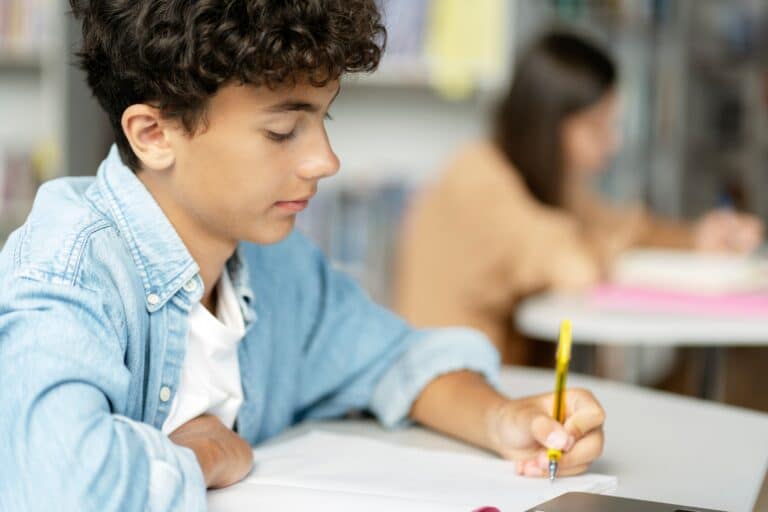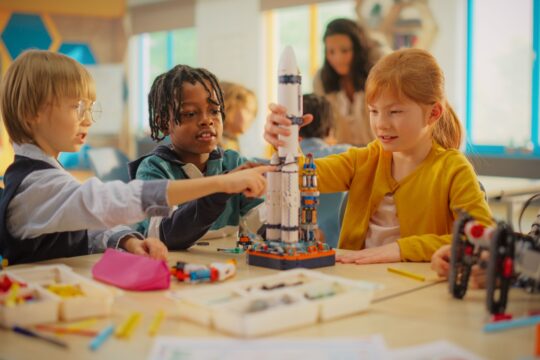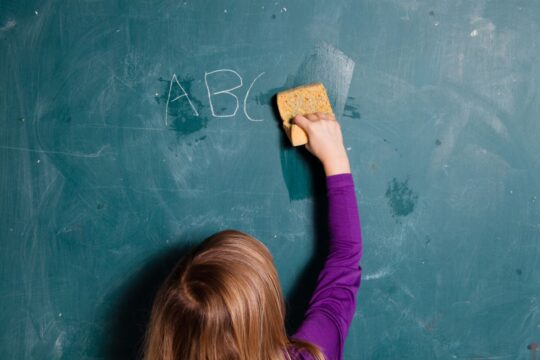As a teacher, you’ve seen firsthand how your students can lose focus, from daydreaming in their seats to chatting with their friends.
Keeping a child’s attention has never been easy, and with the average attention span now down to about 8 seconds (which is said to be shorter than a goldfish), it’s becoming even harder.
While flexible seating has helped younger students release some energy, older students are often expected to focus for longer periods.
They need strategies and support to build their attention skills to meet these expectations. Here are some practical tips to help your students stay focused and engaged in the classroom.
Start the Class with Movement
If you’re teaching elementary students, you already know how much they dislike sitting still for more than a minute. While you may not always be able to let them “get their wiggles out” throughout the day, you can start on the right foot by incorporating movement first thing in the morning.
Before diving into your lesson, or even during your morning meeting, let your students move their bodies to prepare their brains for the day.
They can sing, dance, do yoga, play a quick review game, or use a tool like GoNoodle. Whatever activity you choose, getting them active early increases the likelihood they’ll stay focused later on.
Remove Distractions
Eliminating every distraction in a classroom may seem impossible, but you can minimize them. For instance, if the bright lights in your room are overstimulating for some students, consider dimming them. If the hallway noise is drawing attention away from learning, close the door.
Disruptive students can also affect the entire group, so try rearranging seats as needed to prevent distractions. Small adjustments like these can go a long way in helping students focus more on the task at hand.
Have Students Make a “To-Do” List
When students feel overwhelmed by everything they need to do, it’s hard for them to focus. Help them manage their workload by teaching them to create a “to-do” list.
Writing out tasks helps students visually organize their responsibilities, and crossing off completed items gives them a sense of accomplishment. This strategy allows them to focus on one task at a time without feeling stressed by everything else they need to complete.
Take Brain Breaks
Once your students have focused on a task for a significant amount of time (which depends on their age), it’s time to give them a brain break. Brain breaks are short physical or mental exercises designed to refresh their attention.
Research shows that learning through movement increases oxygen flow to the brain, improving concentration. Studies also confirm that brain breaks positively impact academic performance.
Consider adding a few short breaks throughout the day, and use this brain breaks guide to find activities that help your students unwind and refocus.
Help Students Build Endurance
Focusing for long periods doesn’t happen overnight—it’s a skill that takes time, patience, and practice to develop. Help your students build their “attention endurance” by breaking it down into manageable goals.
For example, compare it to how professional athletes train. Athletes don’t reach their peak performance overnight—it takes months of consistent effort. Similarly, students can build their focus by gradually working toward their goals.
If a student wants to read for 30 minutes during D.E.A.R. (Drop Everything and Read) time, they can start with shorter sessions and slowly increase their stamina over time. With daily practice, they’ll get there.
Keep it Fresh with New Teaching Methods
Shake things up by trying new teaching methods or introducing unexpected activities. While routine is important, especially for the younger grades, too much predictability can get boring. Instead, mix it up.
Rotate between group discussions and cooperative learning, try independent work, partner projects, or even gamified learning. Utilize tools like interactive quizzes, scavenger hunts, or creative storytelling to add an element of surprise.
A fresh approach can re-energize the room and help students stay engaged. The goal is to create an environment where students never know exactly what exciting thing might come next, keeping their attention on the lesson instead of their daydreams.
Relate Lessons to Students’ Lives
Consider making your lessons more personal. When students see a connection between what they’re learning and their own lives, their focus naturally improves.
Start by finding ways to relate the material to things your students are passionate about.
Are they into sports? Use a football analogy to explain fractions. Do they love gaming? Frame a discussion around strategy or problem-solving in popular games.
Even current events, pop culture, or trends can serve as a bridge to make your content feel relevant. By making learning personal, you’re not just teaching content, you’re fostering a classroom environment where every student feels included, invested, and excited to learn.
When children are engaged, there’s a better chance that they’ll stay focused. Try hard to incorporate activities that get your students up and moving.
With the average attention span decreasing as it is, today’s teachers are going to have to become more and more creative to keep their students focused on what their learning.
Educators never stop learning; check out our available graduate degree programs to hone your skills and promote lifelong learning and academic excellence.




